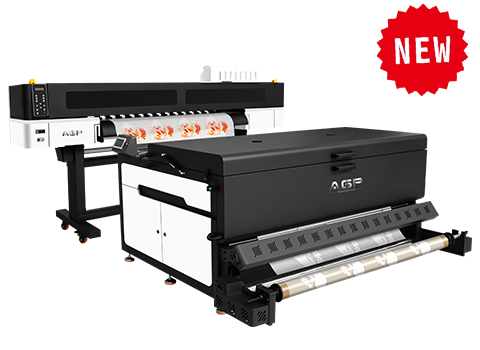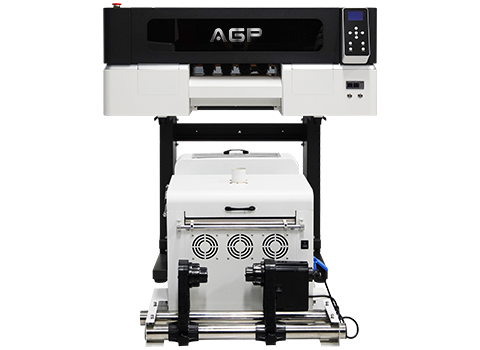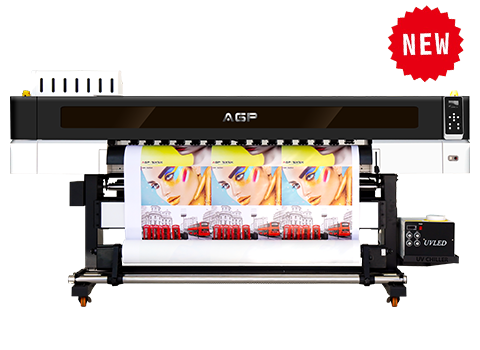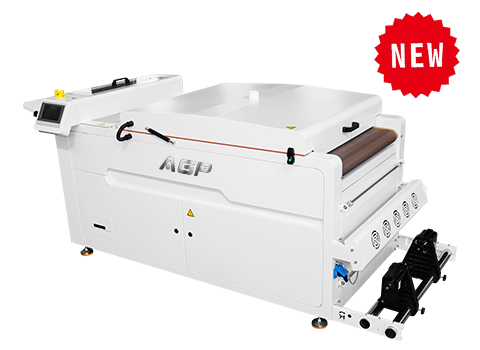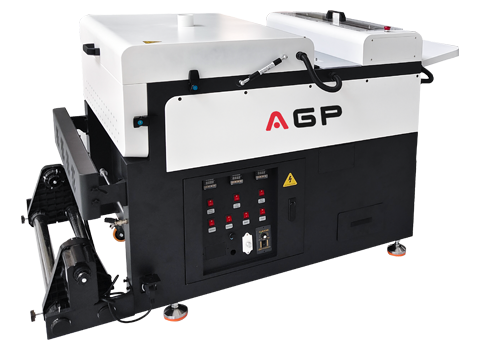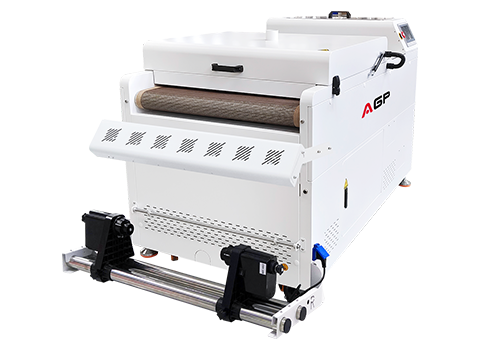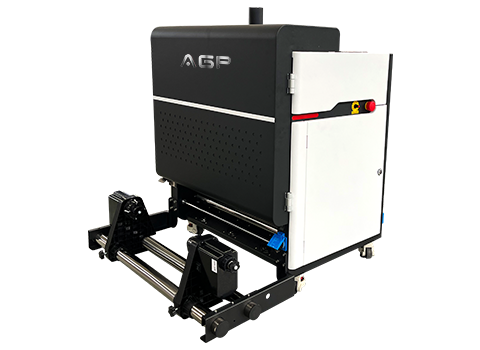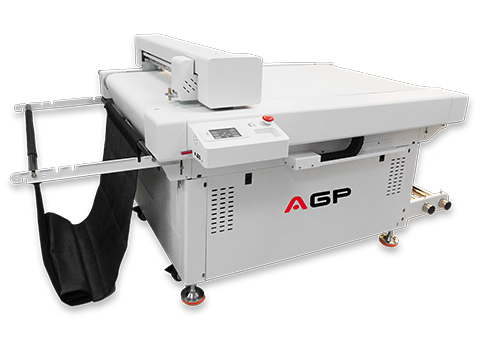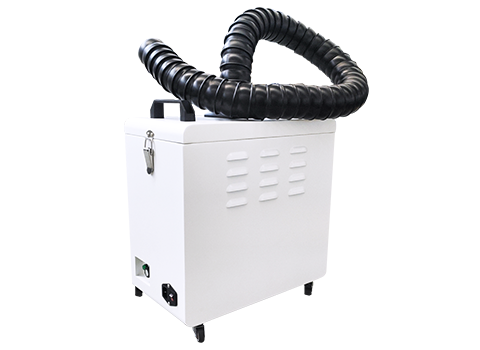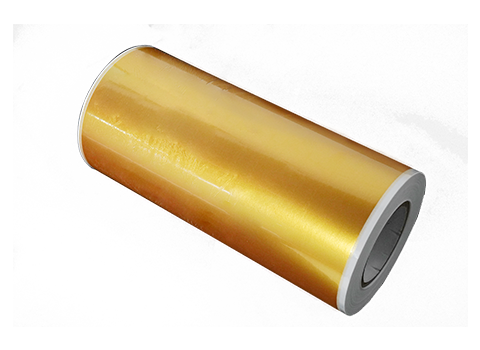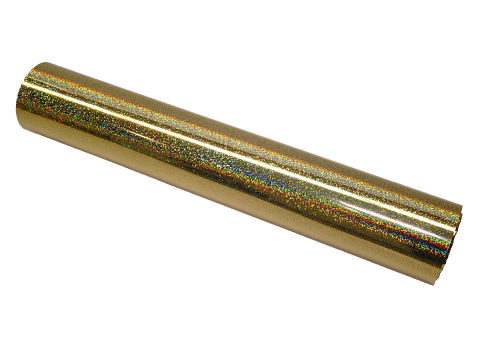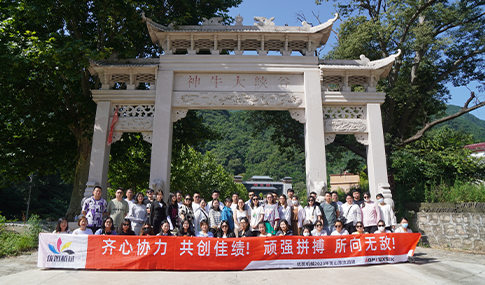DTF vs HTV: Which is Better for Printings and Why?

DTF and HTV both are famous techniques for printing the designs to the material. Heat Transfer Vinyl (HTV) has been used by many people to customize dresses with simple designs. Direct-to-film (DTF) has just gained popularity, it's an emerging technique for customizing the fabrics of different types.
Both of them have distinct features and specifications. In this guide, we will discuss them in detail to assist you in determining which one is suitable for you.
Understanding DTF Printing
DTF Printing is a technique that uses an inkjet technique that prints directly to a transfer film. The application to the substrate is direct and easy to apply. The film is then heat-pressed on the fabric.
To reuse the film for later usage, adhesive is applied to it. Then the film could be secured for a month without damaging the film quality.
- To print with DTF you need to have a specialized printer that has the feature to directly print from film transfer. It helps in achieving high-quality results.
- Further you need DTF ink, formulated to work on DTF printers and films to get prints on different fabrics. Its pigment is water-based, which makes it to adhere the fabric. It dries up quickly and doesn't fade after washing.
- DTF film is an important factor in this printing. It supports the ink and lets the prints get ready. The film is usually very clear and comes in different sizes.
- The hot melting powder is an alternative to liquid adhesives, it can be applied by a heat press and gives a resistance bond to the fabric when it gets melt.
- A heat press is a central device that is a must to transfer the design to the fabric, it gives heat and pressure to the film ultimately the design gets printed on the substrate.
Understanding Heat Transfer Vinyl
Heat Transfer Vinyl (HTV) is a work on printing principles that makes it usable by many people and it gives prints that achieve versatile, durable, and easy results. No matter in which industry you’re working, HTV offers a simple way to create customized designs on fabrics.
It requires heat and pressure and adheres to transfer delicate designs and prints on T-shirts, tote bags, hats, and more. HTV works on the simple principle in which heat and pressure are applied, and the print is moved to a vinyl sheet and then to fabric.
Difference Between HTV and DTF Printing Method
You need to consider the below-mentioned points to differentiate between DTF vs HTV printing methods.
- Complex Designs: DTF printing is suitable for complex designs where you need to deal with different colors and delicate designs. Whereas HTV can work better for simple projects that have basic designs. So, the selection depends on the complexity of your design.
- Material: DTF is suitable for a range of fabric materials including cotton, polyester, or mixed clothes. On the other hand, HTV can work well on cotton, polyester, and blends. Hence, the fabric material is another important factor to consider when you have to choose between DTF and HTV.
- Production Quantity: If you are dealing with larger and complex projects DTF is highly suitable. It can manufacture the bulk of pieces in minimum time. So, DTF is the best choice for complex production in less time. However, if the project is small and you don't need a large number of pieces then better opt for HTV. Hence, the project size or quantity determines which one to choose.
- Operational Cost:While choosing between HTV and DTF, operational cost is another very important factor to consider. In DTF prints you need specific equipment like printer ink or melting powder. It will cost you more but it is adjustable for bulk orders. Although HTV also needs a vinyl cutter and heat press it will cost a little less. So, HTV is the better choice if cost is your main concern.
- Product Quality: What product quality do you want to achieve? DTF printings ensure thesmooth, soft, and flexible finish of the prints. On the other hand, HTV may have a textured finish. Some people don't like the coarser texture of the fabric after prints.
Depending upon the analysis of all the given factors, we can conclude that DTF is suitable for high-quality, versatile, and larger projects. However, if you want to achieve rapid results then simple HTV could be your choice. Moreover, give more priority to the cost that you can send on printing. For new startups, it's most important to see whether they can afford the high quality printing or not.
Which is a Better Option: DTF or HTV?
If you are confused between DTF and HTV and have no idea which one to choose, follow the given details to get your query clear. Both DTF and HTV are good at different tasks. If the goal is to achieve speed and flexibility, and you want to achieve a variety of colors DTF printing is a suitable option. It works evenly well for larger projects.
In basic projects with simple requirements, T-shirt vinyl is a better option. Its biggest edge is that it is cost-effective and durable. You can count it as a better option for small projects or custom designs for each material type.
Advantages and Disadvantages of DTF
Advantages
- It gives the options of multiple colors with high-quality results
- You can use them on multiple fabric types
Disadvantages
- It is costly at the start and includes the printer, adhesive powder, etc.
- Print size is limited to film size
- DTF Printingneeds technical knowledge to operate properly
- It can take time, as it contains different steps.
Advantages and disadvantages of HTV
Advantages
- It gives versatile results
- Allows maximum customization
- Cost-effective for small projects
Disadvantages
- It offers limited sizes according to the vinyl cutter
- More labor is required for cutting preparing and peeling.
- HTV Printing is not suitable for mixed or silk fabrics.
- It gives a textured finish.
Conclusion
Selecting one between DTF vs HTV depends upon the specific needs of the business. DTF is highly suitable if you want a highly detailed and fully-colored design. It offers designs that can work on various fabrics with vibrant colors and patterns. Alternatively, HTV provides high durability and is easy to operate. It gives amazing results in solid colors and simple designs.
Lastly, it all depends on your needs, budget, and materials. Once the details are clear, choosing the one that suits your needs becomes easier.
---------------------------------------------------------------------------------------------------------------------------------------------------------------------------------------------------------------------------------
Welcome to AGP! With nearly a decade of experience in the printer industry, we specialize in R&D and manufacturing, offering exclusive DTF and UV DTF printer solutions. With a global presence, including partnerships in the USA, Canada, UK, Italy, and Spain, we’re ready to take the next step in business expansion together!
Contact Us:
Email: info@agoodprinter.com
WhatsApp: +86 17740405829

